Korean cuisine includes anything you can think of and some things you might not think of. Korea has always been a difficult land to raise food in, with rocky terrain and harsh seasons that limit the growing season.
Also, if you give a culture 5,000 years to experiment, you might guess that everything will be tried at least once, and so it seems to be with Korean food, which stretches over a wide range of territory, from the mild and inoffensive to dishes that some visitors find bizarre. We at 10mag have compiled a list of bizarre Korean foods for you. Will you be brave enough to try them?
Remember that while these foods may be fun to gawk at, they can also be a pleasure to eat. Along with our mostly matter-of-fact description of the ten foods, we’ve collected opinions from non-Koreans who enjoy eating these dishes.
Let their example encourage you to get out there and try the ones that sound interesting. You may just find that you like these bizarre Korean foods!
10. Chicken Feet 닭발 Dalkbal
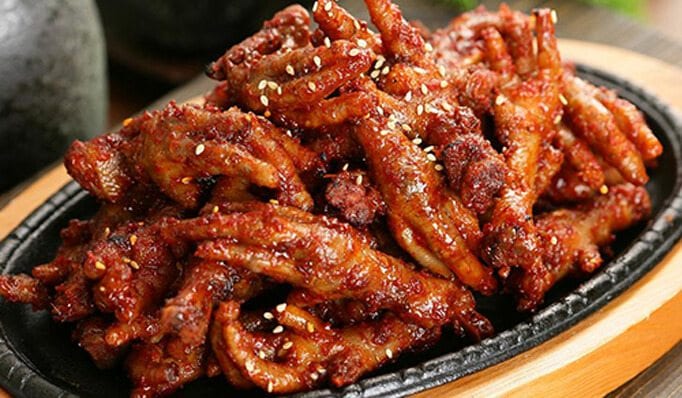
Chicken feet may seem bizarre to some, but they have actually been a staple food in many cuisines including those of the Middle East, Peru, and the southern United States.
Chicken feet are not considered part of a meal, and are best enjoyed in a pochangmacha (포장마차 tent bar), accompanied by good friends and a bottle of soju. Chicken feet are usually chewy (they can be served bone-in, or boneless), and the accompanying sauce is often scorching hot.
People who are initially worried about eating chicken feet are often converted to people who are afraid their tongues are going to explode into flames.
9. Pig Skin 돼지껍질 Dwaeji Kkeopjil

Koreans say that no part of a pig should be thrown away, so it is no surprise that pigskin is a traditional Korean dish. It’s usually barbecued and is a bit rubbery, quite fatty, and occasionally served with some pig hair intact.
If you can get past that, you eventually realize you’re just eating pork rinds/cracklings/scratchings, and you can enjoy the rich, nutlike flavor and delicious high-fat content of the skin. Some even claim that the collagen in pigskin can smooth the skin of the humans who eat it.
8. Fried Cow/Pig Intestine 곱창 Gopchang
Gopchang is the well-cleaned and fried intestine of cows and pigs. This is served in a variety of ways, with one of the most common being barbecued in the traditional Korean style.
It is also served in bokkeum (볶음 stir fry) and stew. Some people find a bit of a squick factor in eating intestines and the gopchang can be quite chewy.
As it can be ordered with other barbecued meat, a newcomer to the dish can eat a little bit of it to become accustomed to its texture before diving in wholeheartedly.
7. Congealed Ox Blood 선짓국 Seonjitguk
Seonjitguk is a much-loved form of haejanguk (해장국), or hangover soup, which is consumed after overindulging in alcohol. It includes cabbage and a variety of other vegetables, but what makes this soup unique is another ingredient, congealed ox blood.
The blood, nearly dried, sits in the soup as chunks or sometimes one enormous hunk. While it doesn’t taste that odd, its texture is a bit unusual. The first time I had seonjiguk I tried to eat an enormous chunk all at once, and it was nearly impossible to swallow – be sure to use your chopsticks to break the congealed blood into smaller pieces!
6. Blood Saussage 순대 sundae

Sundae is another of the bizarre Korean foods that really isn’t that bizarre. In fact, one way of thinking about sundae is that it is to Korean food what haggis is to Scottish food. It’s made by stuffing pig intestines with a mixture of blood, rice, green onions, pork, and noodles, and then steamed.
This is popular street food and is typically served in bowls and eaten with chopsticks or toothpicks. Like most sausage-type foods, the difference between a good sundae and bad sundae is vast, and it’s worth it to try to find the good stuff.
5. Chicken Gizzards 닭똥집 dalkttongjip
The Korean name for chicken gizzards is literally translated as “chicken poo house,” which should be enough to startle anyone contemplating eating them. But don’t worry – they really are only gizzards, and they really are quite good.
For what it’s worth, gizzards are eaten all over the world, including much of South East Asia, Haiti, and the United States. In Korea, chicken gizzards are usually served stir-fried and are very popular as a form of anju (food to accompany drinking).
4. Live Octopus 산낙지 sannakji
Sannakji is an octopus that is cut up while still alive and eaten immediately, typically seasoned with sesame oil. Watching the nakji on your plate is the first bizarre part of this food as some of the dismembered pieces run for the edge of the dish, while others clump together, looking for all the world as if they are trying to reassemble.
Sannakji should be eaten with care, as the suction cups on the tentacles continue to function long after the octopus is cut up and each year there are reports of sannakji chokings.
3. Dog Meat 개고기 Gaegogi
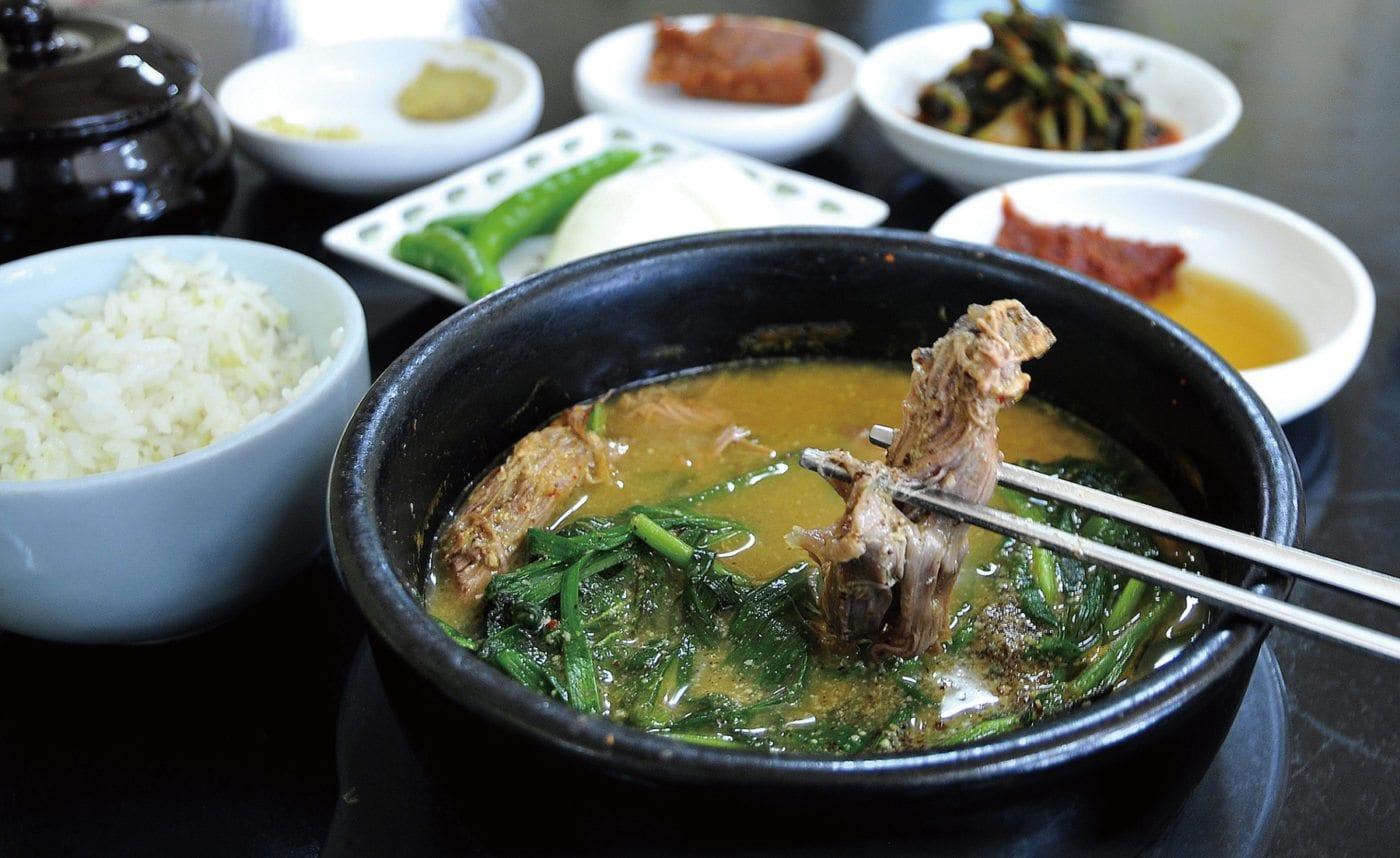
Dog meat is a controversial food, both because of the animal involved and because of the treatment of some dogs raised for food. However, it is a traditional Korean food, normally served as bosintang (보신탕 dog stew) and suyuk (수육 slices of boiled dog meat).
Bosintang is often consumed in the heat of summer, the so-called “dog days.” The closest taste comparison is probably goat or lamb, and dog meat is normally served only in restaurants that specialize in the dish.
2. Steamed Silkworm Pupae 번데기 Beondegi
Steamed silkworm pupae (bug larva, if you really must know) are sold primarily on the streets. If you live in a bigger city you’ve without a doubt walked by enormous vats of the stuff and scrunched up your nose as you hurried past.
Beondegi has a taste somewhere between nutty and bottom-of-a-tennis-shoe, and they offer an alarming explode-in-your-mouth sensation when you bite into them. Some Korean convenience stores sell beondegi in cans, but why settle for stale tennis shoe when you can go downtown and get the fresh stuff?
1. Fermented Skate 삭힌 홍어 Sakhin Hongeo

Eating fermented skate is our number one pick Korean bizarre foods. Skate excrete uric acid through their skin. When a skate is fermented, this uric acid converts into ammonia. Yes, ammonia.
Hongeo also has a tough consistency, something like rubber with crystals in it. Be careful there can somtimes still be fish bone inside. Still, it’s a dish much beloved in some quarters, particularly among harabeoji (할아 버지 grandfathers) and in Jeolla-do, where some consider it a delicacy.
Hongeo is usually ordered as part of samhap (삼합), a combination of samgyeopsal, kimchi, and skate. If you are ever feel brave to try it, your eating strategy should include lots of pork and kimchi. Personally I am not fan althoug I know non-koreans that enjoy it. As with any Korean food I’m not that keen on, I normally line it up like this: skate (or other unformiliar food) in front, gochujang behind that, and then some drinks like soju shot , beer glass, and water glass behind that.
There you have it, the ten of the most bizarre Korean foods that you can find in Korea. Tried them all already? Read our article about the 10 oldest restaurants in Seoul.
Follow our 10Mag Food instagram to get to know the latest foodie tips.







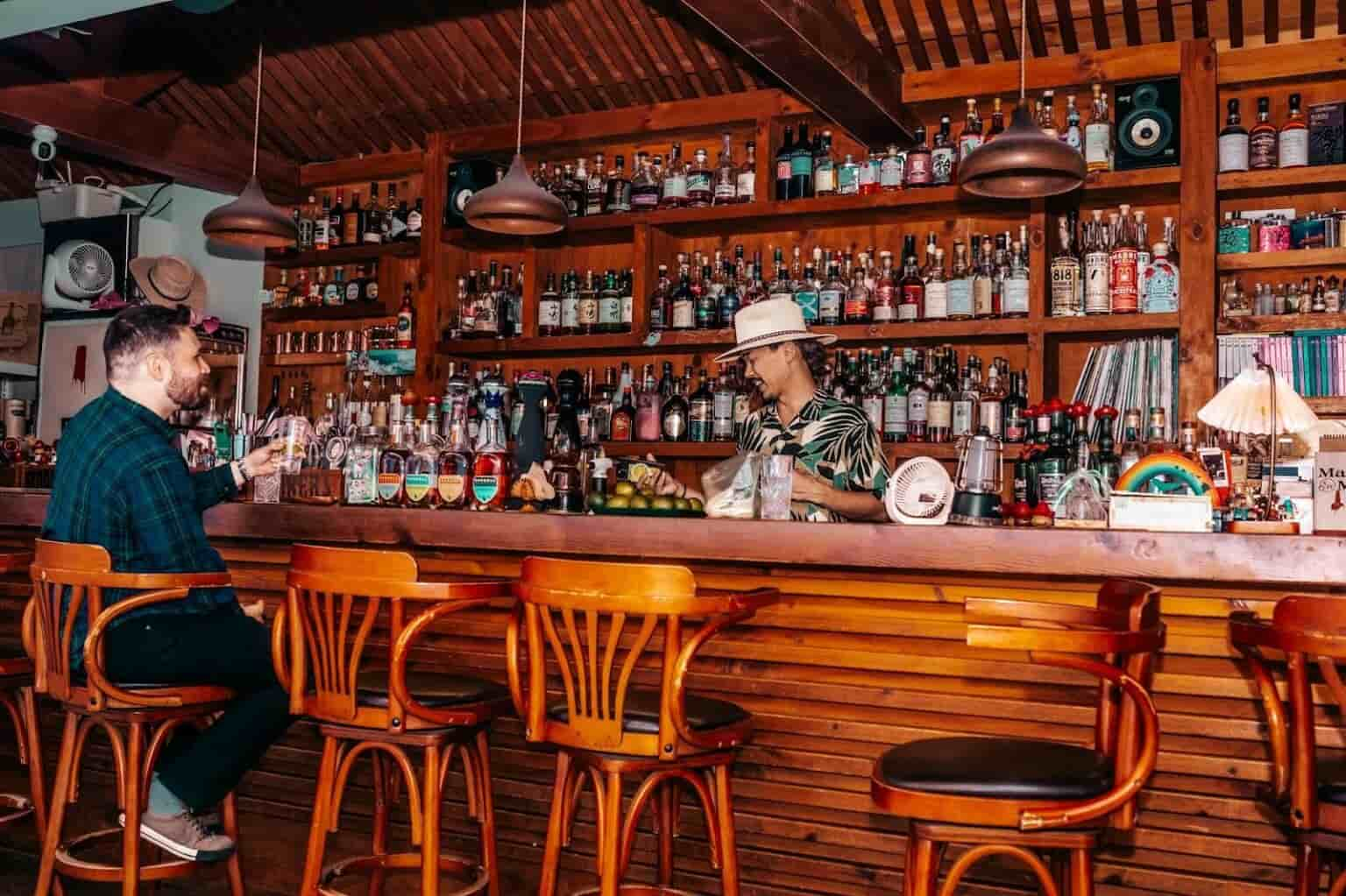
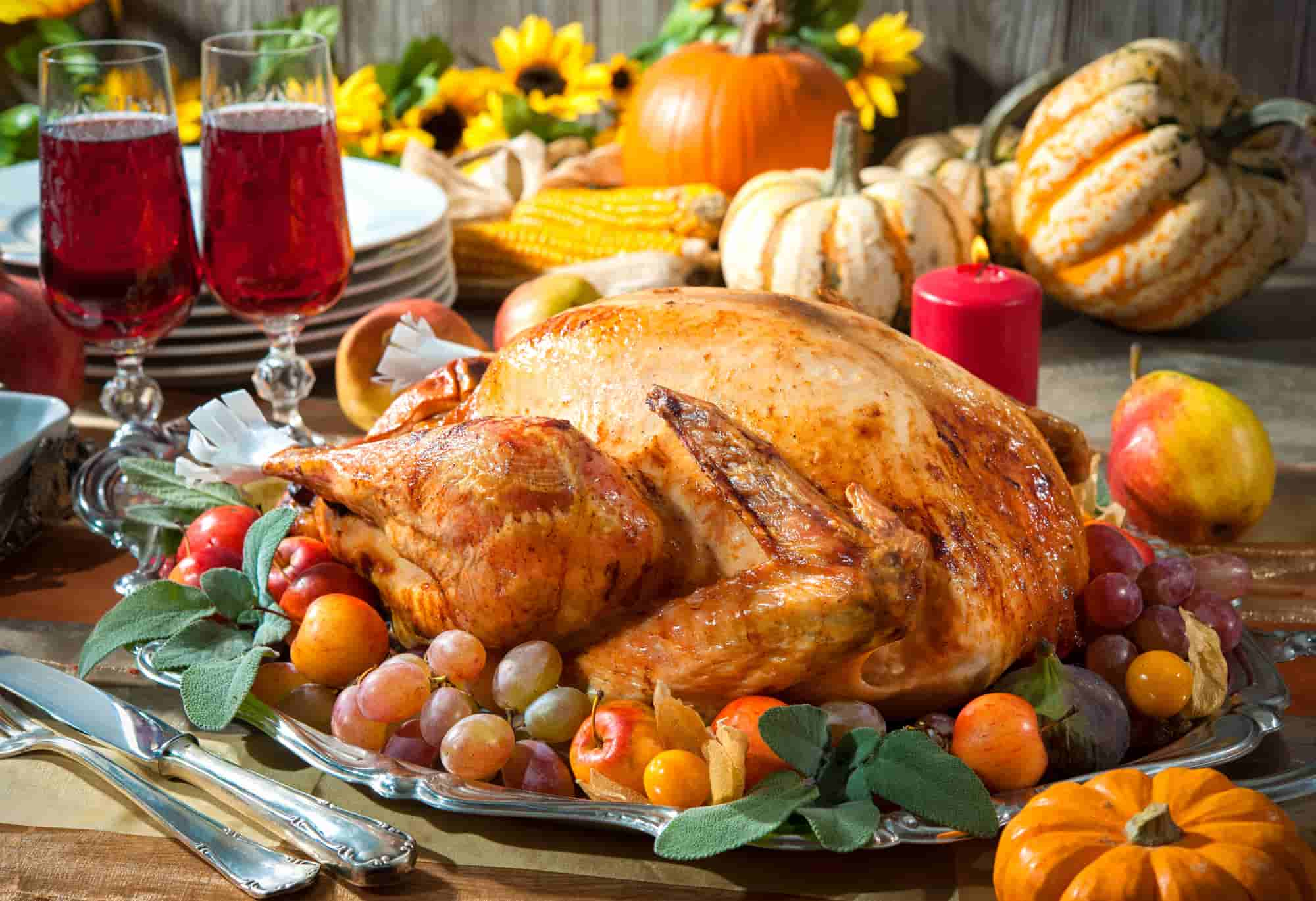

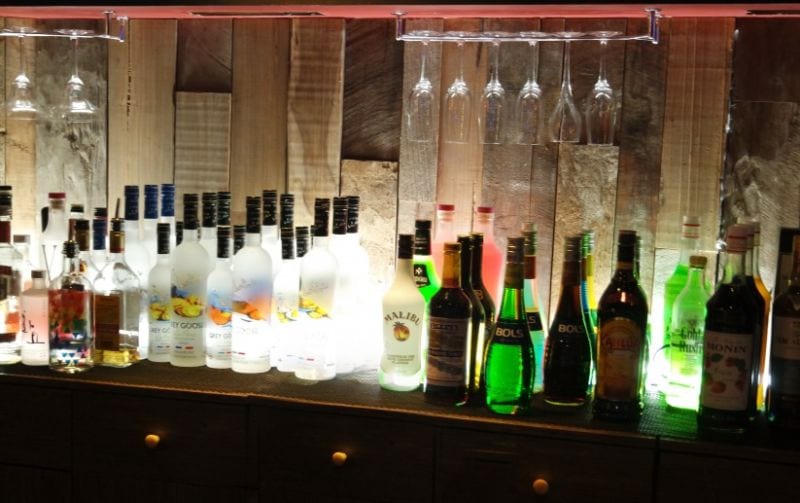
1 comment
카일라
다음에 가격을 추가하면 좋아요
너무 좋아요!